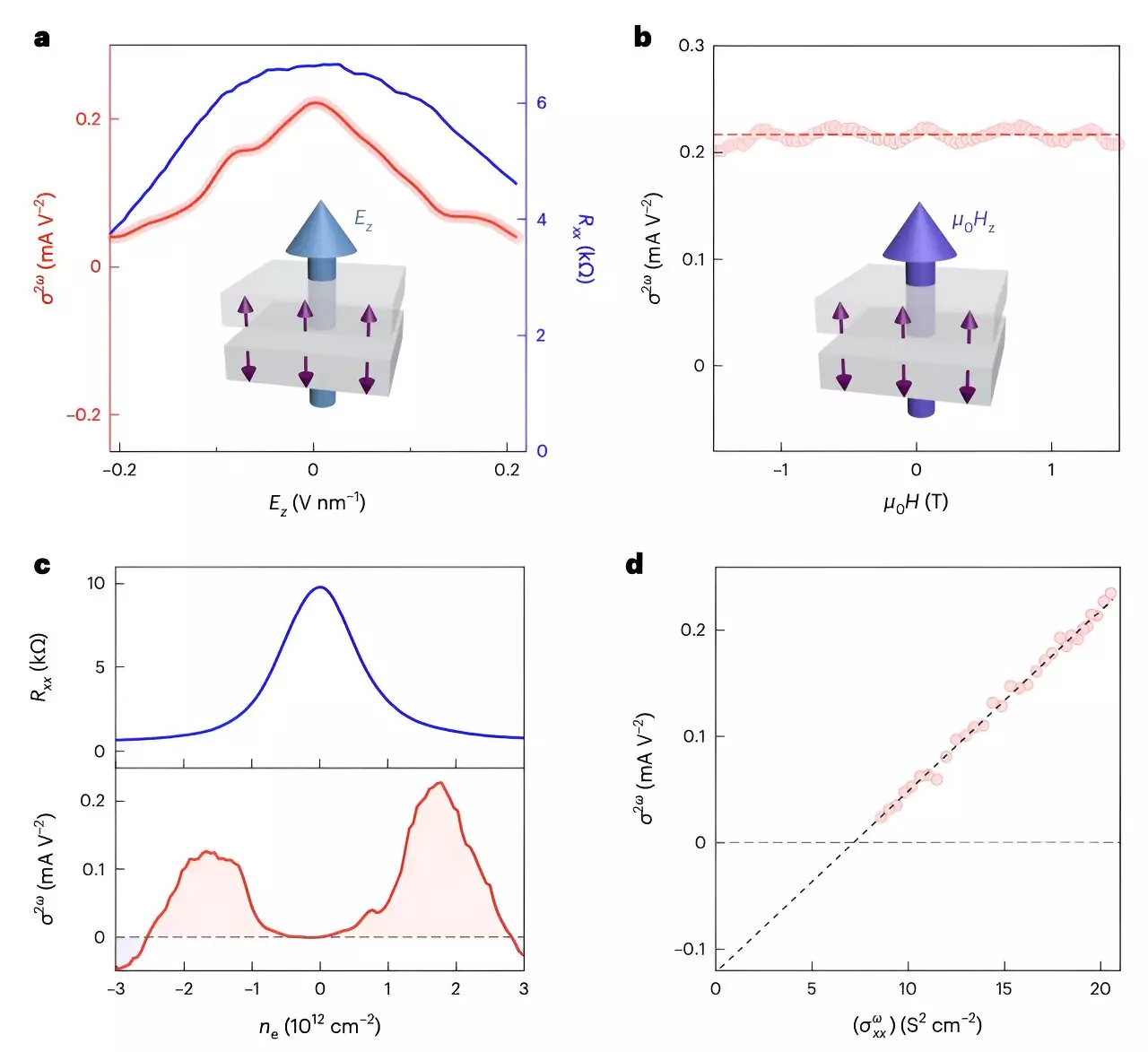Antiferromagnets are a unique class of materials characterized by their intrinsic lack of net magnetism. This is a result of the alternating alignment of magnetic moments between neighboring atoms, creating a balanced state that cancels any macroscopic magnetic properties. In the world of condensed matter physics and material science, these materials have garnered significant attention due to their fascinating electronic and magnetic properties. Researchers have begun to explore the potential applications of antiferromagnets in the development of next-generation spintronic devices, which rely on the intrinsic spin of electrons for information processing.
Recent advancements at Harvard University have brought the antiferromagnetic material MnBi2Te4 into the spotlight. This compound is particularly notable for its centrosymmetric crystal structure, which traditionally suggests no directional charge separation—a phenomenon central to many conventional semiconductor applications. However, the Harvard team made a groundbreaking discovery: they observed an antiferromagnetic diode effect in MnBi2Te4, a finding that could catalyze the development of innovative electronic technologies. Their research findings were documented in a recently published paper in the journal Nature Electronics.
The diode effect, widely recognized in various materials, allows for the controlled flow of electrical current in one direction. This characteristic has long been utilized in essential electronic components such as radio receivers, digital circuits, temperature sensors, and microwave circuits. The Harvard researchers expanded upon this foundation, exploring the phenomenon within antiferromagnetic materials. Previous studies highlighted a superconducting diode effect found in non-centrosymmetric polar conductors, leading to the assumption that antiferromagnetic topological insulators could exhibit similar behaviors. The research team’s observations challenge long-held beliefs about directional charge transport in centrosymmetric crystals.
To investigate the antiferromagnetic diode effect, the researchers adopted creative approaches in their experimental setup. They constructed devices from even-layered MnBi2Te4 incorporating various electrode configurations—some featuring Hall bar electrodes, which are used to measure the Hall effect, while others employed radially distributed electrodes arranged in circular patterns. This methodological diversity allowed the team to observe the anticipated antiferromagnetic diode effect with non-linear transport characteristics across both device types.
By employing advanced techniques, including spatially resolved optical methods and electrical sum-frequency generation (SFG) measurements, the researchers confirmed the unique properties of MnBi2Te4. Notably, they detected substantial second-harmonic transport in their nonlinear electronic devices. Such groundbreaking measurements underscore the potential versatility of antiferromagnetic materials in a range of applications.
The implications of discovering an antiferromagnetic diode effect in a centrosymmetric crystal are immense. The authors of the study noted that this effect not only opens pathways for new electronic devices but also introduces fresh perspectives on device architecture specifically tailored for spintronic applications. Their findings suggest potential uses in in-plane field-effect transistors and innovative systems for microwave energy harvesting.
Furthermore, the research accentuates the utility of electrical sum-frequency generation as a method for probing nonlinear signals within quantum materials. This innovative approach may facilitate the exploration of additional non-linear phenomena that are integral to the future of quantum computing and information processing.
The discovery of the antiferromagnetic diode effect in MnBi2Te4 represents a significant advancement in material science, reshaping the potential landscape for future electronic and spintronic devices. The Harvard team’s work not only challenges existing notions of charge transport in non-centrosymmetric materials but also highlights the wealth of unexplored opportunities in antiferromagnets. Continued research will likely delve deeper into these phenomena, aiming to harness their full potential and the development of new, high-performance technologies that could revolutionize the electronics industry. By bridging the gap between fundamental science and practical application, the team’s findings lay the groundwork for a transformative journey in the field of spintronics.


Leave a Reply